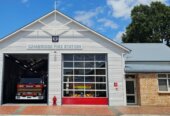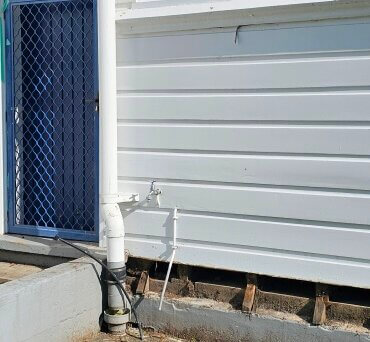
One of the four kauri pillars from 1881 holding up the St Andrew’s Church Bell Tower is rotten
Pigeons and their toxic poo have silenced the six bells in St Andrew’s Anglican Church belfry.
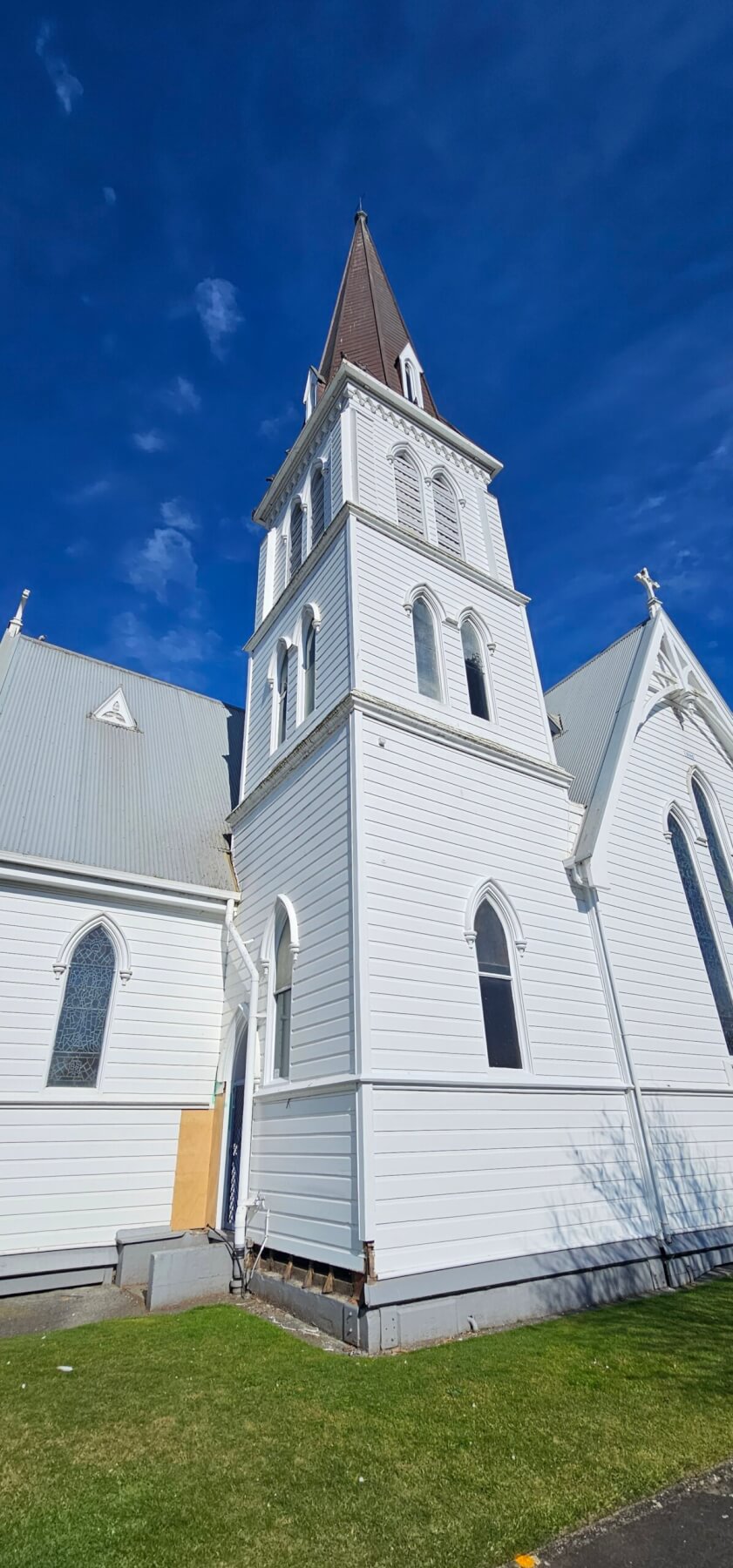
One of the four kauri pillars from 1881 holding up the St Andrew’s Church Bell Tower is rotten silencing the bells within. Photo: Mary Anne Gill.
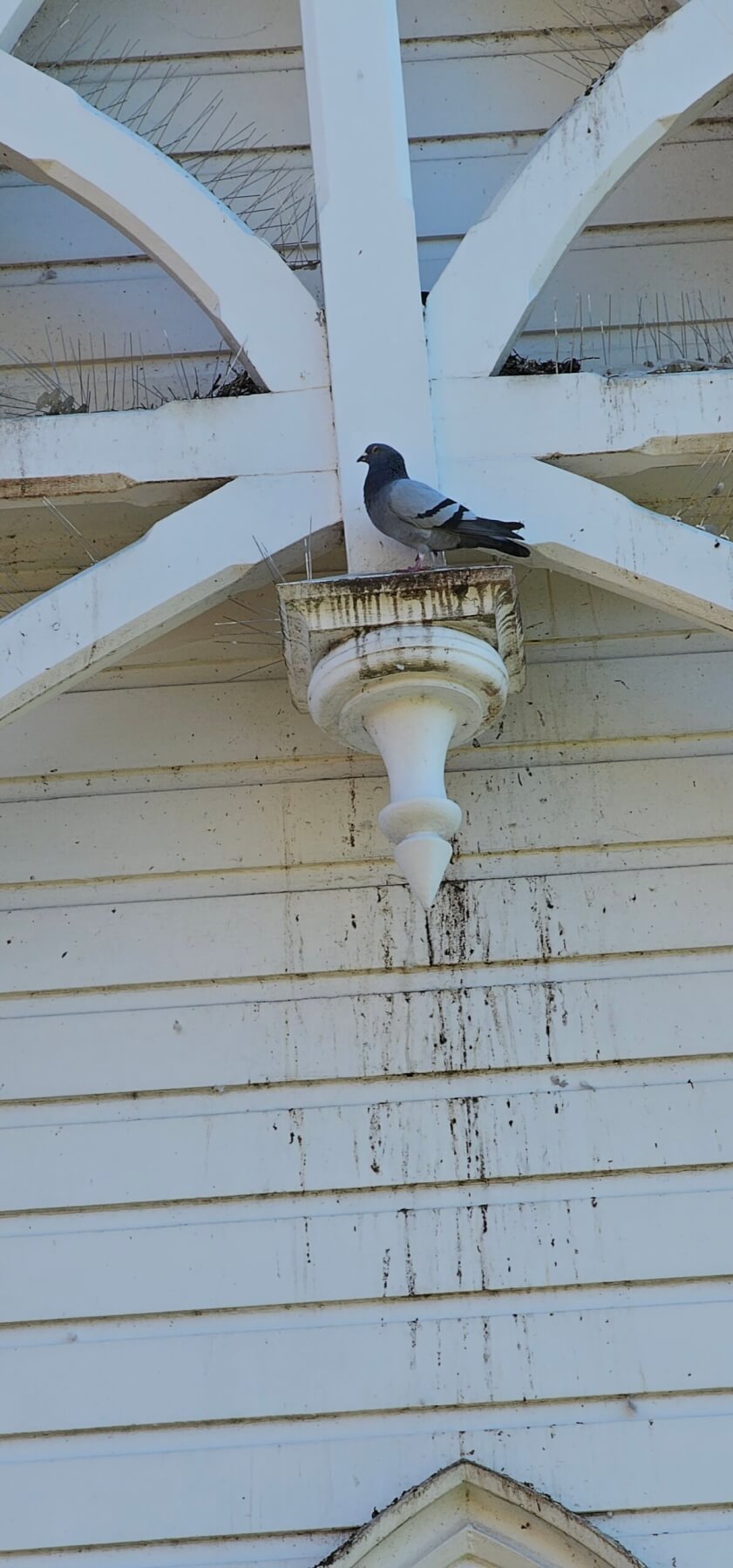
Pigeons’ poo is thought to be responsible for the rotting. Photo: Mary Anne Gill.
One of the four kauri pillars holding up the bell tower at the historic white Cambridge church is rotten at the base – a victim of 143 years of pigeon excrement – and that has prompted church officials to close off access to the bells.
So, campanologists – the formal word for bell ringers – are unable to access the belfry while engineers prepare a report.
The only people allowed into the vestry are those who need to turn the church lights on.
The cast steel bells are unique because of the way they are rung down or chimed, rather than up which is the norm and because most church bells are bronze. All up they weigh 1524 kgs with the tenor bell the heaviest at 762 kgs.
The bells, tuned in the key of F, are usually hand rung every Sunday before the first service and during the week when bell ringers practice.
Steve Riddell of the church’s building committee said the rot was discovered in the 300mm x 300mm kauri beam when they were preparing to paint the church.
See: The two towers
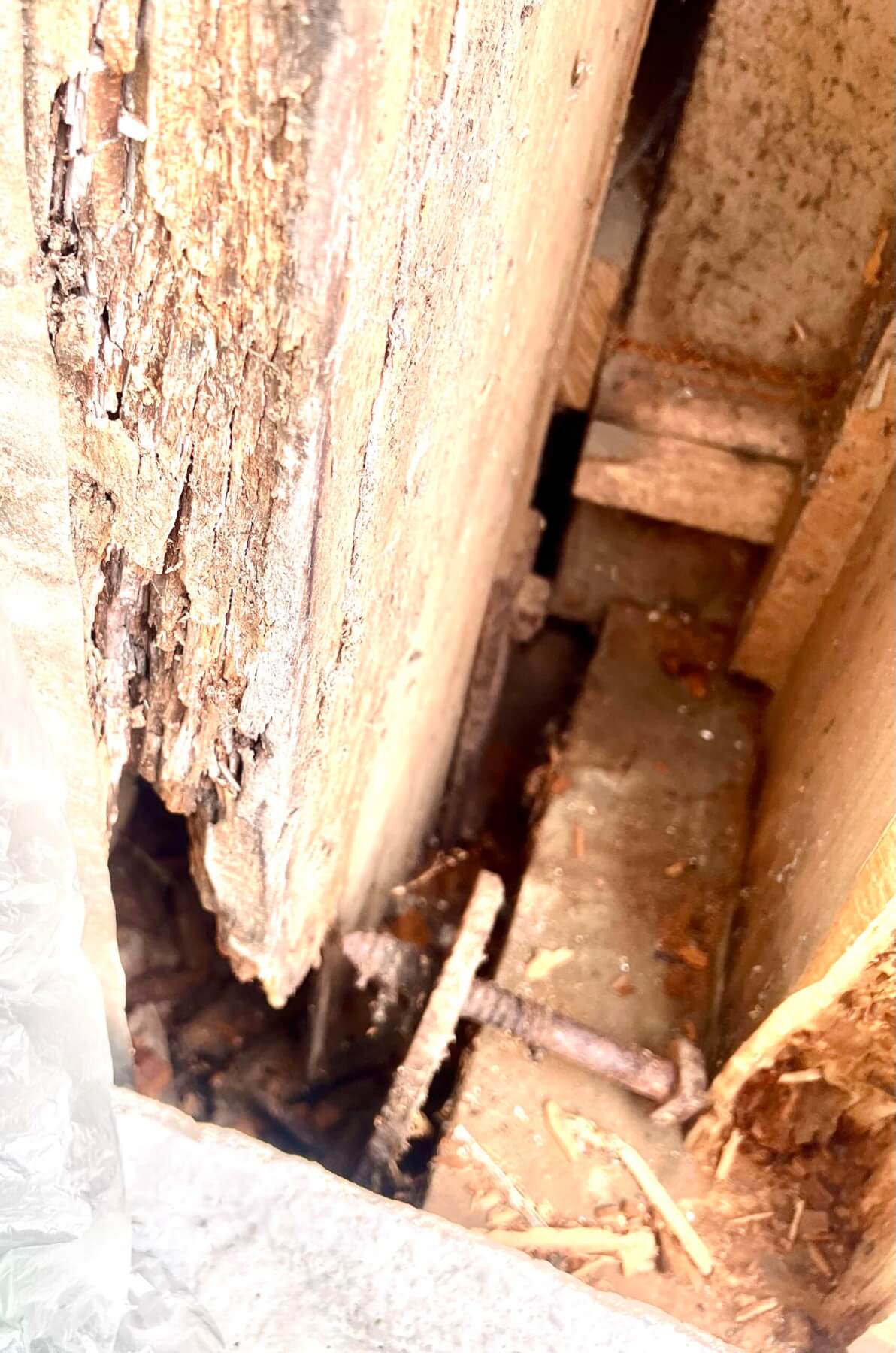
The rotten kauri beam. Photo: Supplied.
“The other three beams are fine,” he said.
Builders removed timber planks alongside the beam and were relieved to find the rot had not spread.
Plywood has been temporarily put over the rotting timber.
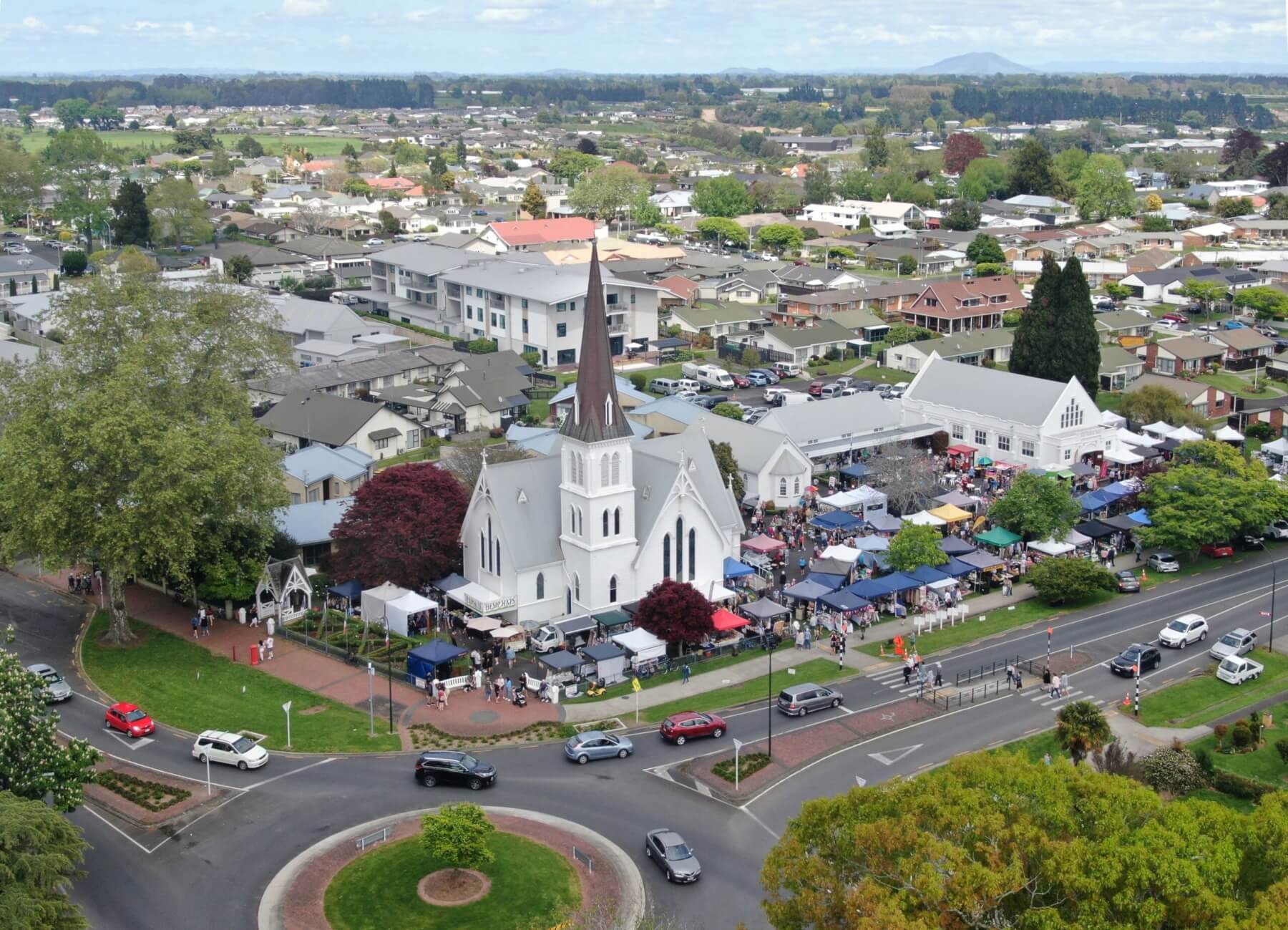
A drone shot of Cambridge’s historic St Andrew’s Anglican Church with the tip of its spire at 33 metres (107 feet) the highest point in the town. Photo: Brian Holden.
St Andrew’s Church was built in 1881 by William G Connolly, from the plans of Thomas Mahoney, for £1570. Rev William Willis checked each piece of timber, rejecting anything that was not heart kauri.
The bells were installed three years later for £360.
The church entered Heritage New Zealand’s historic place category one register in November 1984.
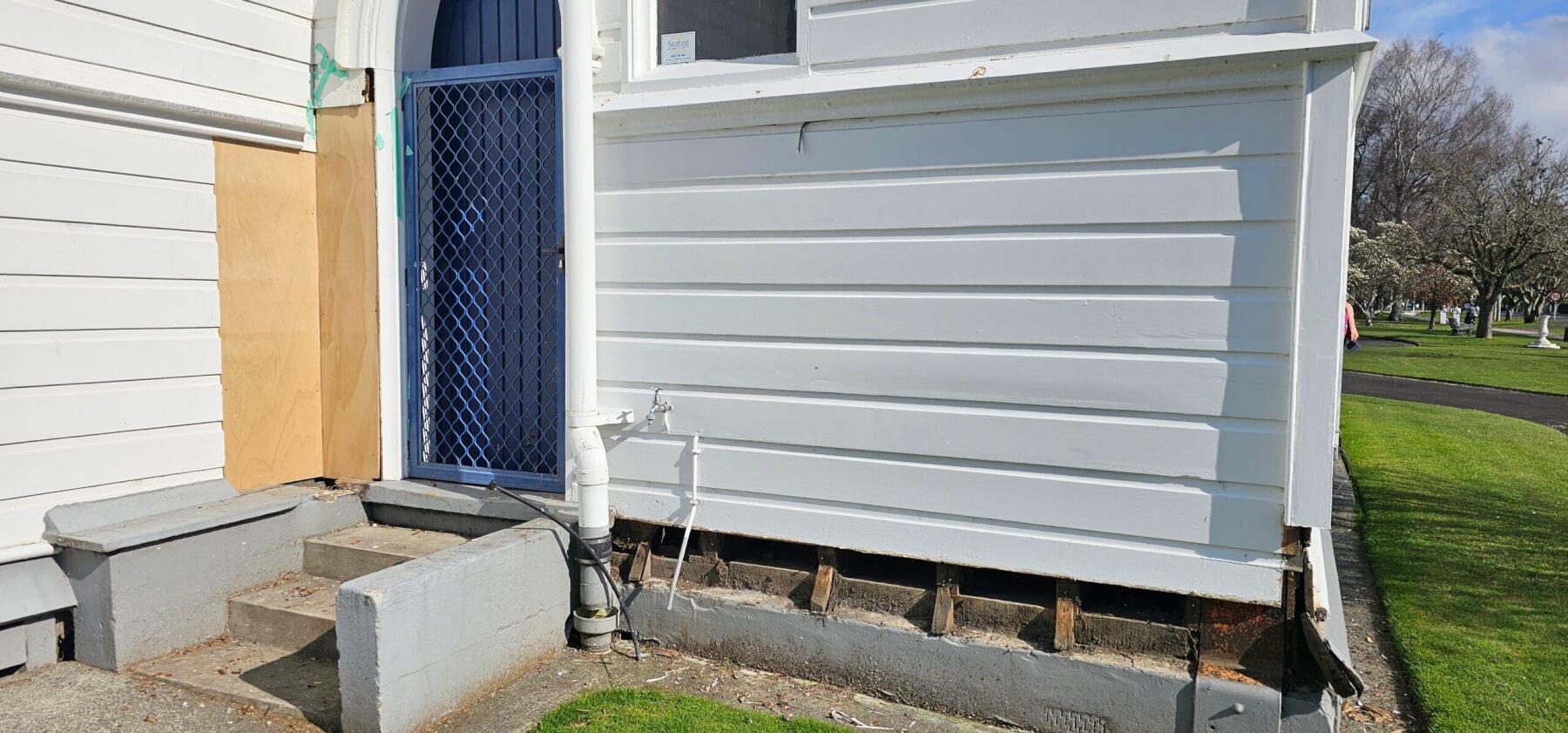
One of the four kauri pillars from 1881 holding up the St Andrew’s Church Bell Tower is rotten silencing the bells within. Photo: Mary Anne Gill.




